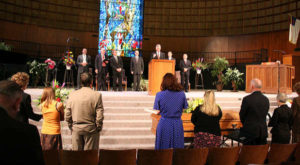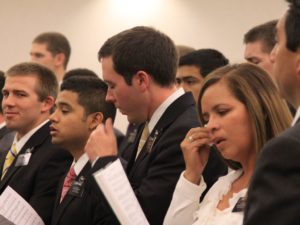Preparing a Funeral Service
Preparing a Funeral Service
In the last two posts we looked at the challenge of preaching at a funeral service. We also considered some tips on how to prepare to preach at a funeral service. In this post we’re switching gears just a bit. We will be looking at the process of preparing a funeral service at which you will preach.
As I said in the first of these posts about funeral preaching, when I got the first call to “do” a funeral, I had no idea what to do. I don’t know if it was because no one covered that during my 3+ years of seminary training, or because I skipped that class. Whatever the case, I was suddenly in a panic, because I didn’t have the first idea of what to plan.
 That first funeral was challenging, too. I didn’t know the person who died. Worse was the fact that he had been dead over two weeks by the time anyone checked on him in his mobile home. So, neither body nor ashes were present. Rather, there was a picture up in front of the area where I was going to lead this service.
That first funeral was challenging, too. I didn’t know the person who died. Worse was the fact that he had been dead over two weeks by the time anyone checked on him in his mobile home. So, neither body nor ashes were present. Rather, there was a picture up in front of the area where I was going to lead this service.
I put something together, and I thought it went fairly well. But since then I’ve had a lot of opportunities to reflect on what to put in a service. Here’s some thoughts for you to consider as well.
The Purpose of a Funeral
According to Dr. Alan Wolfelt, the director of the Center for Loss and Life Transition, there are six needs that a funeral should be designed to meet:
1) acknowledging the reality of the death, 2) embracing the pain of the loss, 3) remembering the person who died, 4) developing a new self-identity, 5) searching for meaning, and 6) receiving ongoing support from others. (quoted from an article on the website, funeral basics)
Acknowledging the reality of the death
Let’s think about each of those purposes for a moment. In your service there should be something that  acknowledges the reality of the death. This can be done right at the outset of the funeral service. I will begin a funeral with some of the information I gleaned from the family when I met with them as I was preparing for a funeral service with the family. I say something like, “The world is a poorer place today than it was just a few days ago. In the world there was someone who was (and here I’ll use some of the adjectives that they gave me when they reflected on their loved one). I will use that sentence as many times as necessary. And then move to prayer.
acknowledges the reality of the death. This can be done right at the outset of the funeral service. I will begin a funeral with some of the information I gleaned from the family when I met with them as I was preparing for a funeral service with the family. I say something like, “The world is a poorer place today than it was just a few days ago. In the world there was someone who was (and here I’ll use some of the adjectives that they gave me when they reflected on their loved one). I will use that sentence as many times as necessary. And then move to prayer.
Embracing the Pain of the Loss
By sharing their memories of the person as mentioned above, we are well into this purpose of the funeral service. If relationships with the person who died was strained, or if the funeral was a tragedy, you might add some statements about the fact that there are various kinds of loss. One kind is the loss of what we expected, but what will never be.
For instance, the death of a child causes us to grieve the loss of that particular person, but we also grieve the fact that they will never graduate, date, get married, have children, etc. That, too, is a pain of loss. This kind of loss can be felt when someone dies in middle age as well. One woman said to me, as we were preparing for a funeral service that she thought that she and her husband would grow old together. Now that will never happen.
Remembering the Person Who Died
 You have already done some of that if you used the tactic mentioned above. There are other ways to add into the service as well. Often, someone from the family will want to share memories, or two or three people. One funeral service I did had several people share. A good friend, as well as one of the deceased’s children, a grandchild, and an employee all had brief memories. These can be wonderfully poignant, humorous, and tear-inducing times.
You have already done some of that if you used the tactic mentioned above. There are other ways to add into the service as well. Often, someone from the family will want to share memories, or two or three people. One funeral service I did had several people share. A good friend, as well as one of the deceased’s children, a grandchild, and an employee all had brief memories. These can be wonderfully poignant, humorous, and tear-inducing times.
One word of warning here. I did one funeral where the family wanted an open share time. They asked that I go around with a microphone and allow anyone to reflect on the person’s impact on their life. That funeral lasted two and a half hours. After that, when a family would ask for an open share time, I would share the risk. Then I would ask for permission to cut it off after about ten minutes. And then, I take action when things have gone on for ten minutes or so. I then encourage people to share directly with the family.
In the next post, I’ll continue these purposes of a funeral service as we continue to consider preparing for a funeral service that is impactful and helpful.
Here are some other ideas shared about how to personalize a memorial service.



